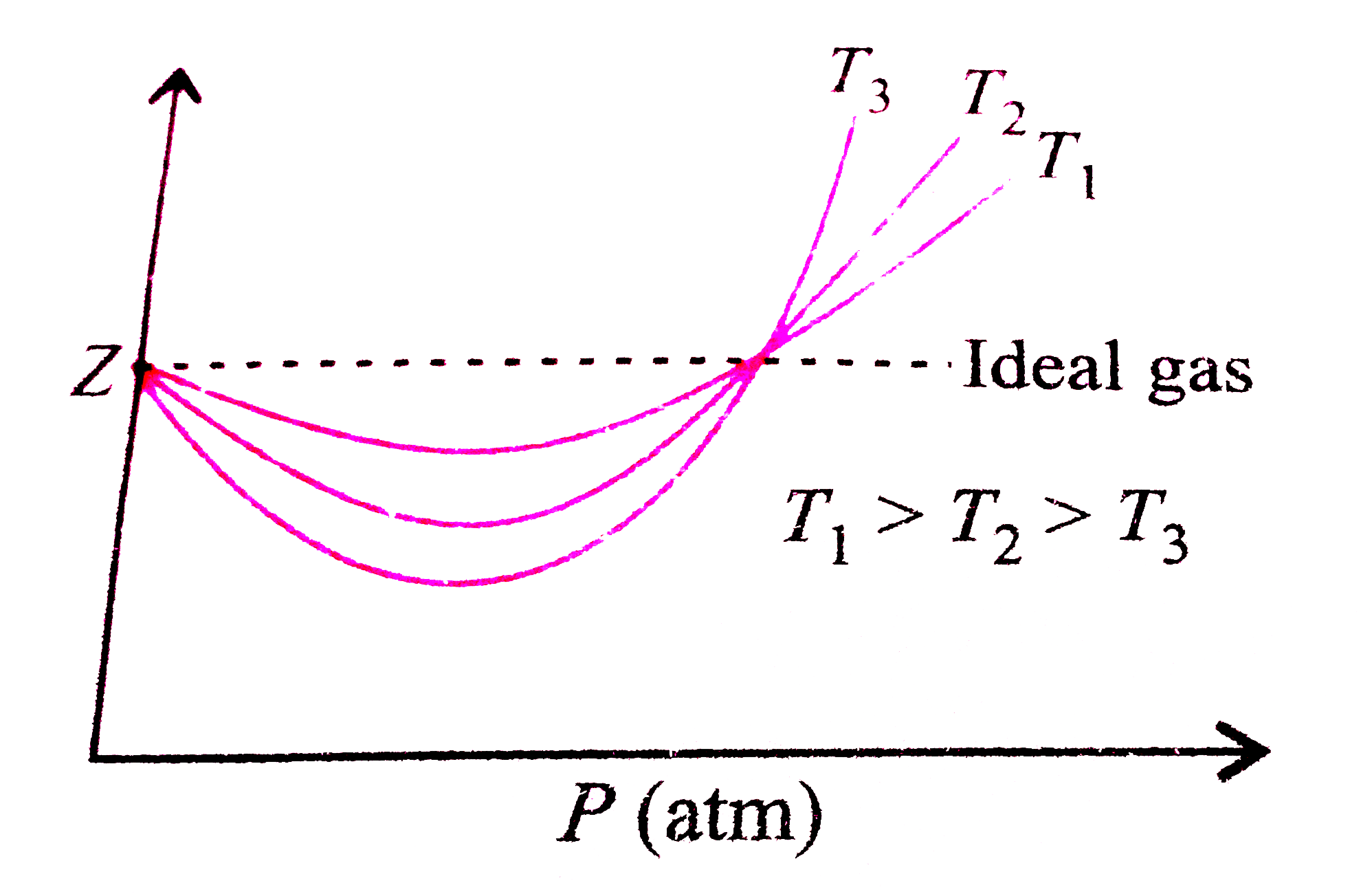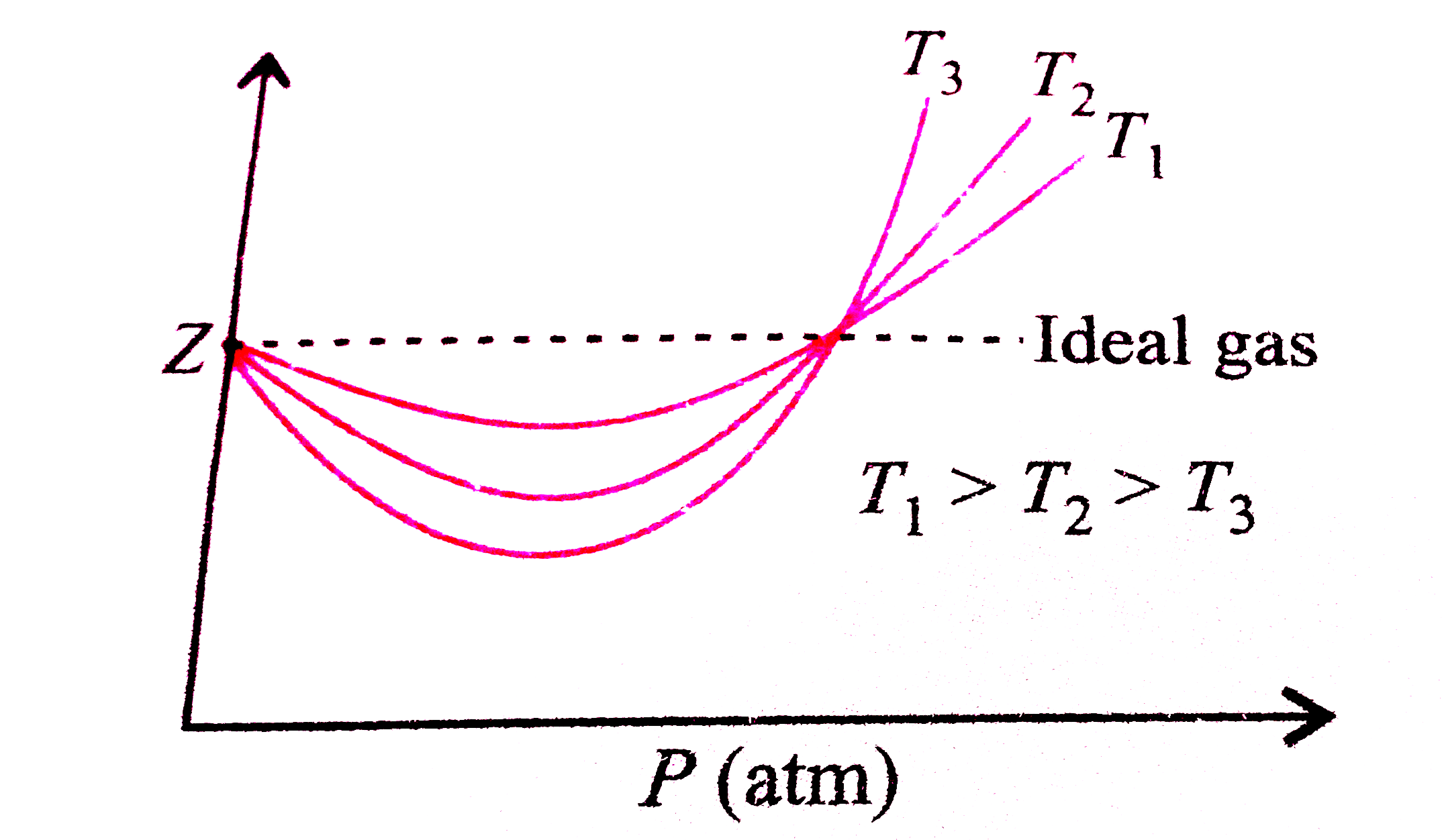The temperature at which a real gas obeys the ideal gas laws over a wide range of pressure is called
Critical temperature
Boyle's temperature
Inversion temperature
Reduced temperature
The correct Answer is:B
To solve the question, "The temperature at which a real gas obeys the ideal gas laws over a wide range of pressure is called," we can follow these steps:
Step 1: Understand the Concept
We need to identify the specific temperature at which a real gas behaves like an ideal gas. Ideal gases follow the ideal gas laws without deviation, while real gases show deviations due to intermolecular forces and volume occupied by gas molecules.
Hint: Think about the conditions under which real gases approximate ideal behavior.
Step 2: Identify the Temperature
The temperature at which a real gas behaves ideally is known as the Boyle's temperature. This is the temperature at which a real gas starts to obey the ideal gas laws over a wide range of pressures.
Hint: Recall the name associated with the ideal behavior of gases under certain conditions.
Step 3: Representation of Boyle's Temperature
Boyle's temperature is represented as Tb. This notation is commonly used in thermodynamics and physical chemistry.
Hint: Remember the notation used for specific temperatures in gas laws.
Step 4: Calculation of Boyle's Temperature
If you need to calculate the Boyle's temperature for a specific gas, you can use the formula:
Tb=ARB
where:
- Tb = Boyle's temperature
- A = Van der Waals constant (related to the attraction between molecules)
- RB = Van der Waals constant (related to the volume occupied by gas molecules)
Hint: Familiarize yourself with the Van der Waals equation and how constants A and B are derived.
Final Answer
The temperature at which a real gas obeys the ideal gas laws over a wide range of pressure is called Boyle's temperature (Tb).
We need to identify the specific temperature at which a real gas behaves like an ideal gas. Ideal gases follow the ideal gas laws without deviation, while real gases show deviations due to intermolecular forces and volume occupied by gas molecules.
The temperature at which a real gas behaves ideally is known as the Boyle's temperature. This is the temperature at which a real gas starts to obey the ideal gas laws over a wide range of pressures.
Boyle's temperature is represented as Tb. This notation is commonly used in thermodynamics and physical chemistry.
If you need to calculate the Boyle's temperature for a specific gas, you can use the formula:
Tb=ARB
where:
- Tb = Boyle's temperature
- A = Van der Waals constant (related to the attraction between molecules)
- RB = Van der Waals constant (related to the volume occupied by gas molecules)
The temperature at which a real gas obeys the ideal gas laws over a wide range of pressure is called Boyle's temperature (Tb).
Topper's Solved these Questions
- STATES OF MATTERBOOK - VMC MODULES ENGLISHCHAPTER - STATES OF MATTEREXERCISE - ENABLE
50 Videos
- STATES OF MATTERBOOK - VMC MODULES ENGLISHCHAPTER - STATES OF MATTEREXERCISE - EFFICIENT
45 Videos
- SOME BASIC CONCEPTS OF CHEMISTRYBOOK - VMC MODULES ENGLISHCHAPTER - SOME BASIC CONCEPTS OF CHEMISTRYEXERCISE - IN - CHAPTER EXERCISE - H
8 Videos
- STATES OF MATTERBOOK - VMC MODULES ENGLISHCHAPTER - STATES OF MATTEREXERCISE - IN-CHAPTER EXERCISE-I
10 Videos
Similar Questions
The gases obey the different gas laws only theoretically. Practically all of them show some deviation from these laws. These are called real gases. The deviation are maximum under high pressure and at low temperature. These are comparatively small when the conditions are reversed. It has been found that the easily liquefiable gases show more deviations from the ideal gas behaviour as compared to the gases which are liquified with difficulty.
The temperature at which the real gases obey the ideal gas laws over a wide range of pressure is called
View SolutionThe temperature at which real gases obey the ideal gas laws over a wide range of low pressure is called:
(a)Critical temperature
(b)Inversion temperature
(c)Boyle temperature
(d)Reduced temperature
View SolutionSelect the correct statement for a real gas
(i)The behaviour of the gas become more ideal when pressure is very low.
(ii)Pressure of gas for ideal behaviour depends upon nature of the gas and its temperture.
(iii)The temperature at which a real gas obeys ideal gas law over an appreciable range of pressure in low pressure rang is called Boyle's temperature.
View SolutionThe temperature below which a gas does not obey ideal gas laws is
View SolutionName the temperature at which real gases behave as ideal gases over appreciable range of pressure.
View SolutionBoyle's temperature or Boyle point is the temperature at which a real gas starts behaving like an ideal gas over a particular range of pressure. A graph is plotted between compressibility factor Z and pressure P.

What is the variation of Z with pressure ?
View SolutionBoyle's temperature or Boyle point is the temperature at which a real gas starts behaving like an ideal gas over a particular range of pressure. A graph is plotted between compressibility factor Z and pressure P.

What is the deviation of real gas from ideal behaviour in terms of compressibility factor , Z ?
View SolutionThe temperature of an ideal gas increases in an:
View SolutionBoyle's temperature (TB) : It is the temperature at which a real gas exhibits ideal behavior in low pressure range. Different gases have different value of TB, which is related to the van der Wall's constant a and ab as follows: TB=aRb
The compressiblity factor for a real gas is given as Z=1+0.35P−168TP. Where P is in bar and T is in Kelvin. What is the Boyle's temperature of the gas?
View SolutionStatement-1 : At low pressure and high temperature real gas approaches the ideal gas behaviour.
and
Statement-2 : At low prossure and high temperature the molecules are negligible.
View Solution
